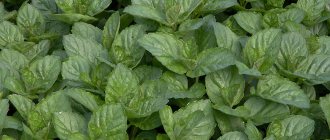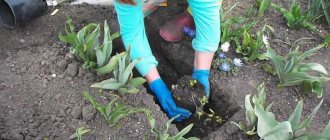Introduction
There are several leading companies in the world engaged in eustoma breeding. In the Russian Federation, mostly seeds from these producers are sold, but packaged by local companies.
Because of this, confusion often arises in the names of varieties. Therefore, we will present international names presented on the official websites of breeders. In most cases, varieties are named after a color, and this color is included in several collections.
Eustoma varieties are divided into five groups depending on the timing of flowering.
Group “0” – very early, “1” – early, “2” – middle, “3” – late, “4” – very late. Some manufacturers distinguish four groups, without the “super early” one.
Lisianthus varieties are most often bred from the species Eustoma Russellianus (Russell), formerly called Grandiflorum or Eustoma large-flowered.
When to plant and which seeds are best to choose
Eustoma differs from many plants in that it reproduces exclusively by seeds. This is due to the fact that cuttings never produce roots, and an underdeveloped root system will not allow the plant to be propagated by dividing the bush. As a result, it will simply die.
Seed cultivation of Irish roses is a labor-intensive process. The seeds are very small and do not have high germination rate, it usually does not exceed 30%.
Eustoma seeds are extremely small and difficult to plant.
Having decided to plant eustoma, you need to carefully select the seed:
- It is better to buy seeds from trusted manufacturers and specialized stores;
- Preference should be given to those treated with a special gel. This increases seed germination by up to 40% and simplifies the sowing process.
The timing of planting is influenced by the region in which the flower is grown and the position of the moon at the time of planting. For the northern regions, January is considered the deadline, and in the southern climate zone, seedlings can be planted in March.
Table. Favorable and unfavorable days for sowing in 2019 according to the lunar calendar
| Month | Favorable days | Unfavorable days |
| March | 7, 10, 11, 12, 14, 15, 16, 19, 20, 21 | 3, 4, 5, 6, 13, 17, 18, 22, 30, 31 |
| November | 9, 14, 21, 22 | 1, 2, 7, 14, 15, 23, 28, 29; |
| December | 3, 4, 5, 8, 9, 10, 11, 12, 27, 31 | 2, 3, 4, 7, 8, 10, 17-19, 21, 22, 23, 26 |
White
Series "Echo" (Echo) variety "Pure White". A tall variety (60-80 cm in height) suitable for growing at home and in the garden for cutting. The first group of flowering, large double flower (5-6 cm) pure white.
“White” from the “Rosita” series (Rosita, 1, 2, 3 and 4). New big collection. A tall variety (80-100 cm) with a medium-sized double flower in the shape of a rose. An excellent variety for cutting and making bouquets.
"Ivory" (Ivory) in the line "Carmen" (Carmen). The color translated is “ivory”. A low-growing variety (15-25 cm) from the popular series of “indoor” eustomas. A simple white flower.
"Sapphire White" (Sapphire white or white sapphire). A low-growing variety for growing at home. Pot 10-20 cm, plant height 13-15 cm, simple flower. Eustoma “Sapphire white” is a real mini rose.
“White” (White), series “Rosie” (Rosie). A low-growing plant 15-25 cm high with a fully double flower. Attractive white eustoma for true connoisseurs.
Other varieties
Other popular varieties are all called “White” by default and differ in series. Therefore, we will list the series and flowering groups and if there are Russian names.
- Tall varieties are simple: “White Mermaid” (“White” from the “Mermaid” series), “Piccolo” (Piccolo, 1, 2 and 3).
- Tall terry: "Alissa" (Alice, 1), "Borealis" (Borealis, 0), "Excalibur" (Excalibur, 2 and 3), "Mariachi" (Mariachi, 2). "ABC" (ABC, 1 and 3), "Flare" (Flae, not specified). “Arena” (Arena, 2), “Corelli” (Corelli, 2), “F1 Croma” (Croma, 2 and 3), “Super Magic” (Super Magic, 2).
- Low-growing simple ones: “Silver” from the “Florida” series (Florida).
How to propagate eustoma
The easiest way is to buy a seedling in a pot at the market in the spring and plant it immediately in the garden. But this is not cheap, especially since eustomas are very diverse and there is a strong desire to plant several of its species.
Unfortunately, eustoma is so sensitive to root injuries that its propagation by dividing the bush is impossible. Also, its cuttings do not take root. Therefore, in this case there is only one way out - growing eustoma from seeds.
It will be useful to read:
Planting begonia seeds for seedlings Begonia. Diversity of species Currently, there are about four hundred different species of begonia, and varietal…
Choosing seeds
Eustoma seeds are tiny, like dust, so most often they are sold granulated (coated). Choose the variety you like, just don’t forget that it’s more difficult to grow a two-year-old one.
If you already have an eustoma, you can collect seeds from it. After flowering, a box with seeds is formed, when it ripens (darkens) it can be cut off. Second generation plants grown from these seeds in most cases inherit the parental characteristics (the differences can be very slight). However, each subsequent generation will have an increasingly intensifying split.
When eustoma seeds are acquired, we move on to the next stage - planting.
Sowing seeds for seedlings
Eustoma develops very slowly; you can see the flowering of this delicate beauty only two dozen weeks after sowing. Therefore, the timing cannot be delayed and it must be planted as seedlings in January or even the end of November-December.
Since all eustoma seeds have fairly good germination, and the coated ones contain a certain amount of nutrients, they do not need stratification.
We prepare the seeding soil from a mixture of sand, garden soil and peat; it should be light with a neutral reaction. From purchased earthen mixtures, soil for Uzambara violets (Saintpaulias) is suitable. Before use, the soil mixture must be disinfected. This can be done in the microwave (several minutes at full power), fried in the oven, or poured with boiling water. Additionally, when moistening the soil before planting, use a manganese solution.
As a container for sowing, you can take plastic food containers with lids, disposable or peat cups, or special cassettes for seedlings. Be sure to provide proper drainage - holes in the bottom of the container, and if possible, a small drainage layer of small pebbles.
For eustoma seeds to germinate, light is needed, so we simply distribute them evenly over the surface of moistened and compacted soil and press lightly. There is no need to sprinkle them with anything. Spray the sown seeds thoroughly with a spray bottle to better dissolve the protective shell. Then cover the container with glass, a transparent lid or a bag.
For best germination, eustoma seeds need a very bright place and a temperature of no lower than 20 and no higher than 25 degrees. It is advisable to add additional lighting at this stage. Also make sure that the soil does not dry out, water by spraying water from a spray bottle, or pour it into a tray (if the pots with seeds are in a tray). Do not forget to wipe off any condensation that has formed from time to time.
Under favorable conditions, the first shoots will begin to appear in about 10-14 days. They will be very tiny at first. After pipping the sprouts, the film or glass can be removed immediately. You can also leave them covered for a while (so that the cotyledons do not dry out), but you just need to ventilate them several times a day.
The first stage has now ended. The longest and most important task begins - to raise the babies to the state of full-fledged seedlings.
It will be useful to read:
Growing garden primrose Perennial garden primrose, one of the first to bloom in the spring, attracts the attention of almost all lovers...
Seedling care
In the future, your concerns about the sprouts will be to maintain their optimal daytime temperature of 20-25 degrees, and at night - not lower than 16. Also, mandatory additional illumination with a phytolamp (or energy-saving daylight). Seedlings need light 12-16 hours a day. Water as needed. It is better to water by drip; you can use a syringe without a needle or a large pipette for this. To avoid diseases, occasionally use a solution of “Fitosporin” or “Previcura” when watering.
At this stage, new gardeners can literally panic, as eustoma seedlings, even with the most careful care, suddenly stop growing. This “sitting in place” can last up to two months. There is no need to worry, this is a normal development mode for this plant. At this moment, intensive root growth occurs, so the growth of the above-ground part of the plant stops. Flower growers should be patient and continue to provide the necessary care for the seedlings.
When 1.5-2 months have passed and the first pair of leaves appears on the eustoma sprouts, they should be picked into separate cups with a diameter of 5-6 cm. Since your seedlings are still small and very sensitive to root injuries, picking should be done especially carefully. You can remove small plants from the soil using an awl or toothpicks. Use a pencil or finger to make a hole in the new soil and plant the sprout there. If the picking was carried out correctly and carefully, then within a week it will be noticeable that your “babies” have begun to develop intensively.
After picking, 10 days later, we feed the seedlings with complex fertilizer. In the future, they need to be fertilized twice a month.
It is especially important for plants to receive enough light during this period, otherwise they will become very stretched, which will lead to weakening and death of the seedlings. Water carefully as needed. Eustomas do not like getting wet.
After a short time, when your sprouts have grown (approximately in March), it is recommended to carry out another picking into larger peat cups (diameter about 8-11 cm). Using peat pots in the future will help avoid injury to the roots. This time the eustoma seedlings need to be transshipped. Don't forget about drainage and soil acidity (it should be close to neutral). And we continue further care until planting in the garden.
When it gets warmer outside, around the end of April, you can begin to harden the seedlings by taking them out onto an open balcony or veranda for a short time.
If eustoma seedlings were grown for the home, then during the second picking we transfer them into prepared flower pots.
Seedlings in peat tablets
A very convenient way is to grow eustoma seedlings from seeds in peat tablets. Seeds germinate better in them, and the first picking is easier.
Peat tablets about 5 cm in diameter are ideal for sowing eustoma seeds. We place them in a container (you can take a disposable food container with a lid), water them thoroughly with warm water. The tablets will swell in a few minutes and you can drain the remaining water from the container. Then, using a damp toothpick, place one granulated eustoma seed on each peat tablet. Lightly press the seed into the tablet and sprinkle it well with water from a spray bottle so that the protective coating dissolves better. Then cover the container with glass or a transparent lid and place it in a warm and bright place for germination. As with germination in soil, the temperature is 20-25 degrees, additional lighting with a lamp and removal of condensate. You need to water directly into the container as needed.
When the time comes for the first picking - the first two leaves are formed and the roots begin to appear on the surface of the tablet, then transplant the sprouts along with the tablet into a small pot or glass. This should be done in time so that the roots do not grow into neighboring tablets. Further care and second picking, as with seedlings sown in the ground.
Green
“Lime Green” (Lime green) from the “Mariachi” series. Tall variety (75-90 cm) with large (5-7 cm) extra-double flowers of light green color. Second group of flowering.
“Green” (Green) from the “Super Magic” series, we know as eustoma “Green Alley” from. A tall variety with large double flowers with a pale green tint and a medium flowering period.
"Green" (Green) from the episode "ABC 1". Tall variety (80-100 cm). Large double inflorescences of greenish color. Strong stems and high storage stability.
Other varieties
- Tall simple: "Piccolo" (Piccolo, 2 and 3).
- Tall terry varieties: “Alissa” (Alice, 2), “Rosita” (Rosita, 1, 2 and 3), “Advantage” (Advantage, 2), “Arena” (Arena, 3), “F1 Croma” , 1 and 3).
Care after flowering
After flowering, eustoma’s life processes slow down - it goes into a dormant state. At this time, reduce watering and do not introduce fertilizing. What to do next depends on whether the plant will be grown as a perennial or not.
For regions with warm climates, the plant must be prepared for winter: cut off the branches, leaving only 2 or 3 growing points. If in winter the temperature drops significantly below zero, the eustoma can be transplanted into a pot and placed on a loggia or on a closed veranda. This should be a place where the air temperature does not drop below +10°C.
Despite all the efforts and the most correct handling of the flower, it is not able, in the conditions of even the warmest regions of Russia, to become a true perennial plant. The lifespan of this plant is no more than 5 years. At the same time, fewer and fewer flowers will be formed every year.
The eustoma tolerates any transplantation very hard - it adapts slowly and weakens.
Yellow
“Yellow” (Yellow), series “Echo” (Echo). Tall variety (70-90 cm) with a standard double large flower. First group of flowering. Legendary series with good reviews. Excellent option for cutting.
"Yellow" (Yellow) from the series "ABC 1 and 2". In Russia it is also sold as "Madge Yellow" from. Tall variety (80-100 cm) with large double yellow inflorescences.
"Yellow" (Yellow), series "Super Magic" (Super Magic). Tall variety (70-90 cm). Large double yellow flowers. First and second group of flowering.
Other varieties
- Tall varieties are simple: “Piccolo” (Piccolo, 2).
- Tall terry: "Alissa" (Alice, 2), "Aube" (Aube, 3), "Borealis" (Borealis, 0), "Excalibur" (Excalibur, 3), "Mariachi" (Mariachi, 2), "Rosita "(Rosita, 3 and 4), "Advantage" (Advantage, 2), "Gold" in the "Arena" series (Arena, 3), "Corelli" (Corelli, 3), "Croma" (Croma, 3).
- There is also a fairly popular Twinkie Yellow variety from, but we were unable to find information among global producers. According to the packaging: plant up to 50 cm in height with large simple yellow flowers.
How to grow a flower in peat tablets
The second option involves using peat tablets for germination.
- Place such a tablet in a glass, moisten it and wait until it swells.
- Place 3-4 seeds on each tablet and press them lightly. Spray the top again with a spray bottle so that the seed granules begin to dissolve.
When the seeds sprout, ventilate and wipe the greenhouse dry
- Build a mini-greenhouse. To do this, wrap the glass with the tablet in plastic wrap. It is necessary to remove condensation before germination only if the peat tablet is already almost floating in the water. Subsequently, the greenhouse will need to not only be ventilated, but also wiped dry.
- When the seeds sprout, transplant the sprouts into pots as described earlier.
Red
“Carmine” (Carmine or carmine) from the “Mariachi” series (Mariachi, 2nd flowering group). Lisianthus has extra-double large flowers (5-7 cm in diameter) of red color, very similar to a rose. An excellent variety for making bouquets. The height of the bush is 76-96 cm. According to reviews, the flowers tolerate transportation well and last a long time in a vase.
“Red” from the “F1 Arena” series (F1 Arena). Tall variety (70-90 cm) with double large flowers (6-7 cm in diameter) from dark pink to light red or cherry shade. The third group of flowering.
- Today we cannot recommend other proven modern varieties of red eustoma.
Description of the species
Eustoma grandiflora or lisianthus is a spectacular and attractive plant with a rich color palette - from delicate pastel shades to rich and bright tones. White, lemon, powdery, coral, blue or purple funnel-shaped flowers reach a size of 5-12 cm.
Some varieties are two-colored and edged. The height range of the bush is from 20 cm to a meter. The stem is strong, flexible and branches well from the middle.
Petals are double or smooth, becoming darker towards the center; the peduncles are long, grow in a bouquet type - in an inflorescence there are 15-30 large and fragrant flowers.
The leaves are elongated, oval, with raised veins of bluish or bluish-green color. All parts of the plant are covered with a protective layer of wax.
| Short description | |
| Category: | annual plant |
| Color options: | white, lemon, pink, coral, blue, light blue, purple, beige petals; single color or combined |
| Flowering time: | summer |
| Height: | 20-100 cm |
| Width: | 20-30 cm |
| Minimum temperature: | -7 °C to –12°C |
| Optimal light: | bright diffuse lighting |
| Plant companions: | Iberis, Coreopsis, Salvia |
| Frost resistance zones: | 8-12 |
Pink
“Deep Rose” (Deep Rose) from the American series “Flare” (Flae, translated as flash). On sale it is referred to as “Laguna Deep Rose”, only in the photo it looks more saturated in color. Tall variety of the second flowering group. Terry pink flower.
“Pink” (Pink), series “Echo” (Echo). Tall variety (70-90 cm) of the first flowering group from the famous series. Standard double flower. One of the most popular pink eustomas for growing as cut flowers.
"Misty Pink Mariachi" Tall collection (up to 100 cm) “Mariachi” with an extra-double flower reminiscent of a camellia. Light pink eustoma is perfect for making bouquets. Second group of flowering.
"Deep Rose" from the ABC 1 episode. We sell the variety under the name “Maidge Deep Rose”. Tall variety for cutting, 80-100 cm high, with double flowers of light pink color.
"Rose" in the collection "Carmen" (Carmen). Low-growing indoor eustoma (15-25 cm) pink. Simple flower. High-quality root system. Resistant to fusarium.
“Pink” (Pink), series “Florida” (Florida). A low-growing variety (20-25 cm), which can be grown in open ground, a greenhouse and at home (a pot of at least 12 cm in diameter). A popular series with the most resistant varieties to summer heat in the garden. Light pink color.
“Pink” (Pink) from the series “Rosie” (Rosie). A low-growing plant (15-25 cm) with a strong root system, which is suitable for growing as a houseplant. Fully double flower of delicate pink color.
Other varieties
- Tall varieties are simple: “Rose Pink” (Rose pink, 2 and 3) series “Piccolo” (Piccolo).
- Tall terry: "ABC" (ABC, 2 and 3), "Alissa" (Alice, 1 "Rose" and 2 "Pink"), "Arena" (Arena, 1, 2, 3 and 4), "Cocktail Champagne" (Champagne cocktail) in the “Aube” series (Aube, 3), “Borealis” (Borealis, 0), “Corelli” (Corelli, 3), “Rose Pink” in the “Excalibur” series (Excalibur, 2 ), “Mariachi” (Mariachi, 2), “Clear Pink” (Klia pink) series “Robella” (Robella). Series "Rosita" (Rosita): "Rose Pink" (Rose pink, 1, 2 and 4), "Pink" (Pink, 2 and 3) and "Pink Flash" (Pink Flash, 3), "Super Magic" ( Super Magic, 2).
- Light pink lisianthus "Champagne" (Champagne) in the collection "Echo" (Echo), "Misty Pink" (Misty pink) from "Mariachi" (Mariachi, 2) and "Rosita" (Rosita, 2), "Rose" ( Rose) from "ABC" (ABC, 2), "Corelli" (Corelli, 2 and 3).
Reproduction methods
To propagate eustoma, gardeners most often use seeds, less often cuttings. Seed method of propagation of these beautifully flowering plants
To obtain lisianthus seedlings from seeds, it is recommended to sow the seeds in February or March. The seeds are sown in containers with a very loose soil mixture consisting of peat soil and fragments of the bark of deciduous trees (1:1). A ready-made store-bought substrate intended for growing seedlings is also suitable for sowing seeds.
Before sowing, the surface of the substrate is leveled and well moistened. Then the seeds are laid on the moistened soil (it is recommended to purchase seed material in pelleted form) at a distance of 2-3 centimeters from each other. The spread seeds are lightly pressed to the ground with a fingertip, after which the crops are sprayed with warm water from a spray bottle. You cannot sprinkle the seeds with sand or soil.
Next, the container with the crops is covered with a transparent film, in which several small holes are made for better air circulation. Before the emergence of seedlings, they carefully monitor the level of humidity of the soil and air in the improvised “greenhouse”. The waiting period for the first shoots is 2-3 weeks. Before the emergence of seedlings, the container with crops must be periodically ventilated, occasionally spraying the substrate.
In the second half of March, the container with seedlings should be sent to a place with soft diffused light, protected from drafts. The air temperature in the room should be +20-22°C. Strong seedlings can be planted after 6-8 weeks, when they have formed 2-3 pairs of true leaves. Postponing picking to a later date is strongly discouraged.
Some tall varieties of lisianthus can be propagated by apical or intermediate cuttings. This procedure is usually carried out during the period when plants are in the phase of active growth and budding. To obtain planting material, the strongest multi-stemmed eustoma bush is selected, from which a healthy, well-developed shoot is separated. This shoot is cut into pieces so that each cutting has about 4-5 internodes.
Next, the lower leaves on the resulting cuttings are removed, and the upper ones are cut in half. Then the lower cut of each cutting is powdered with a root formation stimulator (“Kornevin”) and placed in a glass of water for 6-8 hours. Root lisianthus cuttings in plain water. If all recommendations are followed, the first roots of the cuttings appear after 2-3 weeks. After this, the rooted planting material can be planted in separate cups with loose soil.
Apricot (Apricot) and Champagne
Among the varieties of lisianthus there is a separate color called “Apricot” (Epricot or simply apricot), which is translated as “apricot”, as well as “Champagne” (Champagne). Varieties with these color names are found among many manufacturers. They are also described as coral or salmon in color.
"Apricot" in the "Corelli F1" line (Corelli F1). Also a tall variety (70-90 cm) with large double flowers of salmon-apricot color. The third group of flowering.
"Light Apricot" (Light Apricot) in the series "Alissa 2" (Alissa or simply Alice). An excellent tall variety (80-90 cm) for growing at home and for cutting. Large double flowers of a delicate coral shade with fringed petals.
"Light Apricot" (Light Apricot) from the collection "Falda F1" (Falda). Tall variety (70-90 cm) with simple medium-sized flowers of light salmon color. Second group of flowering.
"Champagne Arena" (Champagne "Arena"). Tall variety (80-10 cm). Popular series. Large double flower of high quality. Resistant during transportation. The third group of flowering.
“Champagne Echo” (Champagne in the “Echo” series). Tall variety with large standard double flowers. Suitable for cutting. First group of flowering. Eustoma “Echo Champagne f1” is the most popular among varieties of this color.
"Champagne Alissa" (Champagne "Alissa"). The tall variety (80-90 cm) of eustoma is distinguished by large double flowers with dense petals. Amazing color. Second group of flowering.
"Champagne Super Magic" (Champagne "Super Magic"). The plant is 70-90 cm in height with strong stems. Double flower of unusual color, medium size. Second group of flowering.
Diseases and pests
Like any seedlings, eustoma sprouts can be affected by such a well-known fungal disease as “black leg”. When part of the stem of a young sprout turns black and becomes weak, there is only one way out - to remove it urgently. Then, in order to save other seedlings from infection, you should replace the soil as much as possible and treat it with Previcura solution. Since it is impossible to cure a plant from this disease, prevention is very important here: disinfection of the soil before sowing, timely removal of condensate and compliance with the watering regime.
In adult plants, dense planting and improper watering, as well as low temperatures, cause diseases of powdery mildew, fusarium wilt and gray mold. To combat them, various fungicidal drugs are used. Proper care and preventative measures are very important here.
If whiteflies, aphids, fungus gnats or leaf miners appear on the seedlings, you can treat the crop with an insecticide. Metaldehyde will help protect plants from slugs.
Blue and blue
Among the varieties of eustoma it is difficult to find a blue or blue color in our understanding. By the name “Blue”, manufacturers mean lilac, lavender or dark purple color. We did find several varieties of lisianthus close to the blue and blue colors.
"Blue Flash" (Blue flash or blue flash) in the series "Robella" (Robella). A tall plant (80-100 cm) with a large double flower. Second group of flowering. An excellent option for growing at home and for cutting.
“Milka” (Milka), series “Piccolo” (Piccolo). A fairly new variety that has already settled in the hearts of many gardeners. Eustoma "Milka Piccolo" 80-100 cm in height. A simple flower of medium size. Second group of flowering. Delicate blue color of the petals.
“Blue” (Blue) in the series “Rosita” (Rosita, 3rd and 4th group). A new series with a medium-sized double flower resembling a rose. Eustoma "Rosita Blue" grows about 80-100 cm in height. The color of the inflorescence is very close to blue.
"Blue" (Blue) in the series "Corelli" (Corelli). Tall variety. Large double flower almost blue. Excellent for making bouquets. Lasts a long time in a vase. The third group of flowering.
The right place and lighting
When growing and caring for indoor eustoma, it is important to choose the right place for it. Eustoma needs a lot of light. Window sills oriented to the south are suitable for winter, and to the west or east for summer. This way, in the hot season, the plant will be protected from burns, and on cloudy and cold days, more diffused light is required. The quality and duration of flowering will depend on compliance with these rules. Additionally, during the winter months, additional illumination with phytolamps is used (at least 15 hours a day).
Purple eustoma
We will separately consider the well-known varieties with the “Blue” color according to the manufacturers. And let's try to decide together what color they are? We believe that these varieties are much closer in color to purple than to blue.
Let’s start right away from the legendary “Echo” series and the “Blue” variety, or in simple terms – “Echo blue or blue f1”. Tall eustoma (60-80 cm in summer) with a double flower (4-6 cm) of blue-violet color. First group of flowering.
“Deep Blue” (Deep Blue), series “Flare” (Flae, translated as flash). It can be found on sale under the name “Laguna Deep Blue” from Tall lisianthus with a voluminous double flower of violet-blue color.
"Blue" in the "Mariachi" collection. Tall series (80-100 cm). Large extra double flower (5-7 cm) with pure purple color. Second group of flowering.
"Deep Blue" from the "Super Magic" series. Lisianthus grows 70-90 cm in height. Terry large flower of rich purple color with a dark blue core. Second group of flowering.
"Blue" (Blue) in the series "Florida" (Florida). A popular low-growing variety for growing in pots. A simple purple flower.
"Blue" from the "Mermaid" series. Our variety is also known as “The Little Blue Mermaid” from. Compact bush (13-17 cm) with a simple three-dimensional flower (5-6 cm).
"Sapphire Blue" (Blue or light blue sapphire). A popular series of low-growing varieties with simple inflorescences. It is popularly called a dwarf rose or mini-rose because the bush is only 13-15 cm high. Rich purple color.
"Blue Carmen" (Blue Carmen). Low-growing variety (15-25 cm). A simple flower of medium size.
"Lavender Blue" (Lavender Blue or blue lavender) from "Rosie" (Rosie). A low-growing variety with double flowers from dark blue to light purple.
“Lilac” (Lilac, translated lilac) in the series “Carmen” (Carmen). A low-growing variety (15-25 cm) with simple, medium-sized lilac flowers. Excellent bushiness. We sell it as “Carmen Lilac F1” from “Plasma”.
Helpful hints
- If the seeds do not germinate for a long time, you can pierce the granule, thereby facilitating the “pipping” of the sprouts.
- At first, some gardeners recommend using cold boiled water to safely water small sprouts.
- When feeding eustomas, keep in mind that when growing green mass, the plant requires more organic matter and nitrogen, and when forming flower buds, potassium and phosphorus.
- To make the eustoma bush more magnificent and dense, you can pinch the seedlings. However, please note that this may delay flowering for another 2 weeks.
- You should not plant eustoma near iron or brick walls and fences, as when they get very hot under the sun, they can cause burns to the delicate plant.
Growing eustoma from seeds is, of course, a very long and quite labor-intensive process. But many fans of this plant, having gradually gained experience, now do it relatively easily and successfully. If the overseas beauty eustoma has captured your heart, do not be afraid and be sure to try growing it yourself. And when it blooms in your garden, you will receive incomparable joy.
Light purple (lavender)
"Lavender" in the series "Mariachi" (Mariachi). A similar variety to the previous one, only with an extra-double light purple flower 5-7 cm in diameter and a second flowering group.
“Lavender” (Lavender) in the “Rosita” collection (Rosita, group 3). Huge new series in the 2022 catalogue. Tall variety (80-100 cm) with a medium-sized double flower. The inflorescence is shaped like a rose. Soft blue color.
"Lavender" in the Japanese line "Echo" (Echo) or the popular name "Echo Lavender". Tall plant (60-80 cm in height). Ideal variety for cutting. Early flowering - 22-24 weeks, first group. Large double flower (4-6 cm).
"Lavender" in the American series "ABC 2" (ABC, 2). Tall variety (80-100 cm). Large double flower. Light lilac color of dense petals. Lasts a long time in a vase.
Content:
- Biological features of eustoma
- How to sow seeds for seedlings
- How to care for eustoma seedlings
- How to transplant eustoma seedlings into OG
- How to care for eustoma in the garden
- How to organize wintering of eustoma
Eustoma is a perennial flowering plant with flowers that resemble paper clouds. It comes from Central America, but also grows in our latitudes. It is believed that eustoma is difficult to grow, but FORUMHOUSE gardeners succeed - moreover, on our portal this plant is considered quite unpretentious, the main thing is to grow seedlings. Eustoma is grown in the garden, in pots, as an indoor plant; it stays cut for a long time. Many parents of schoolchildren grow it by the first of September, for a bouquet as a gift to the teacher.
In flower beds, large-flowered eustoma (Russell's lisianthus) is usually the most spectacular. One plant produces up to 20 bushes, each up to 15 centimeters in size. Another advantage: eustoma blooms for a long, long time, one flower on the plant replaces another.
Brown and burgundy
In addition to popular colors of inflorescences, such as white, pink or purple, there are varieties of eustoma with a rather amazing palette of colors. We have selected several unusual varieties for you.
"Deep Brown" in the episode "Rosanne 2". A tall variety with a standard double flower, but of rare color. The color is translated as "dark brown", but it is described as lavender brown.
"Brown" in the series "Rosanne1". This variety is from the same series, only with the first group of flowering. It is difficult to describe the color palette of the inflorescence in one word. You can say lemon color, turning into a light brown shade with lilac notes or close to burgundy color.
Features of cultivation
- eustoma prefers bright, diffused light;
- the best soil for eustoma is bark humus and peat in equal parts;
- propagated only by seeds, since cuttings do not germinate, and the too fragile root system does not tolerate division;
- It is necessary to water only after the substrate has dried 2 cm deep;
- try not to replant the plant: it is only conditionally perennial, and the roots will not tolerate replanting;
- home eustoma blooms best in a cool, ventilated room.
In the photo: Blooming purple eustomas in the garden
"Pikoti" or two-color
Picotee refers to a special pattern in which the edges of the petals are painted a different color than the rest. Varieties called “picoti” are produced by many seed manufacturers, and they are often included in various series.
Varieties with a border of different colors and a white center are loved by gardeners around the world. However, the manufacturer warns that the variety may lose its colored edges and become a solid color depending on growing conditions.
White and pink “Pikoti”
"Pink Picotee lmp." (Pink Picoti lmp. in the “Echo” series (Echo, 1). A tall variety with a large double flower of white and pink color. A new variety in the famous “Echo” collection.
“Pink Picotee” (Pink Picotee) from the “Croma” series. Tall collection (80-100 cm). A pink flower with a white edge, very similar to a rose. The third group of flowering.
“Pink Rim” (Pink Rim) from the “Piccolo” collection (Piccolo, 1 and 3). Tall bush (80-100 cm) with a simple flower. In our country, the eustoma of this variety is often called “Piccolo Pikoti crimson”.
"Misty Pink" (Misty Pink), episode "ABC 2". Tall lisianthus with medium-sized double flower. Delicate pink color with white closer to the base of the inflorescence.
"Sapphire" (Sapphire). Dwarf variety measuring 13-15 cm in height. A simple flower with a delicate pink color. Excellent white and pink eustoma “Sapphire Pink Rome” is perfect for growing indoors.
“Rose Picotee” (Rose Picotee), series “Rosie” (Rosie). Low-growing variety 15-25 cm in height. A fully double flower is white with pink droplets on the edges of the petals.
Other varieties
- Tall simple varieties: “Hot Lips” (Hot Lips) in the “Piccolo” series (Piccolo, 2).
- Tall terry varieties "Pink Picotee" (Pink Picotee) of white and pink color in the collections "Aube" (Aube, 3), "Mariachi" (Mariachi, 2) and "Rosita 1". And also “Rose Rim” from ABC 1, Hot Lips from Rosita 2 and Excalibur.
- “Pink Rim” (Pink Rim or “Pink Haze” from the American series y) from the series
Growing indoors
Low-growing varieties, which are compact bushes up to 45 cm high, are well adapted to growing in pots as biennials. However, they will have to be carefully looked after, showing maximum attention and care. Maintaining eustoma, which sensitively responds to the slightest changes in the microclimate in the house, is really not an easy task. The duration of flowering and the decorative appearance of flowers will depend on many parameters and strict adherence to the rules.
The plant, being in cramped circumstances, places high demands on lighting, the composition of the soil in the pot, humidity and ambient temperature.
One to three seedlings can be placed in a 2.5 liter container
To create the necessary conditions, it is good to use an air humidifier, since it is impossible to spray the above-ground part of lisianthus . In a small container it is difficult to control soil moisture and the frequency of fertilizing. They are advised to be done more often than indicated in the instructions for the drug, but in a lower dosage. Growth inhibitors for dwarf varieties are used only in the initial stages, during the period of growing seedlings.
After flowering, eustoma loses its decorative effect and begins to prepare for a period of rest. The shoots should be trimmed so that no more than three internodes and a couple of leaves remain. The plant is transferred to a cool room, watering is reduced to once a month, and feeding is stopped completely.
It is important not to miss the moment when the plant wakes up and begins to produce new shoots. At this time, it needs to be moved back to a warm room with good lighting, and watering and fertilizing should be resumed.











